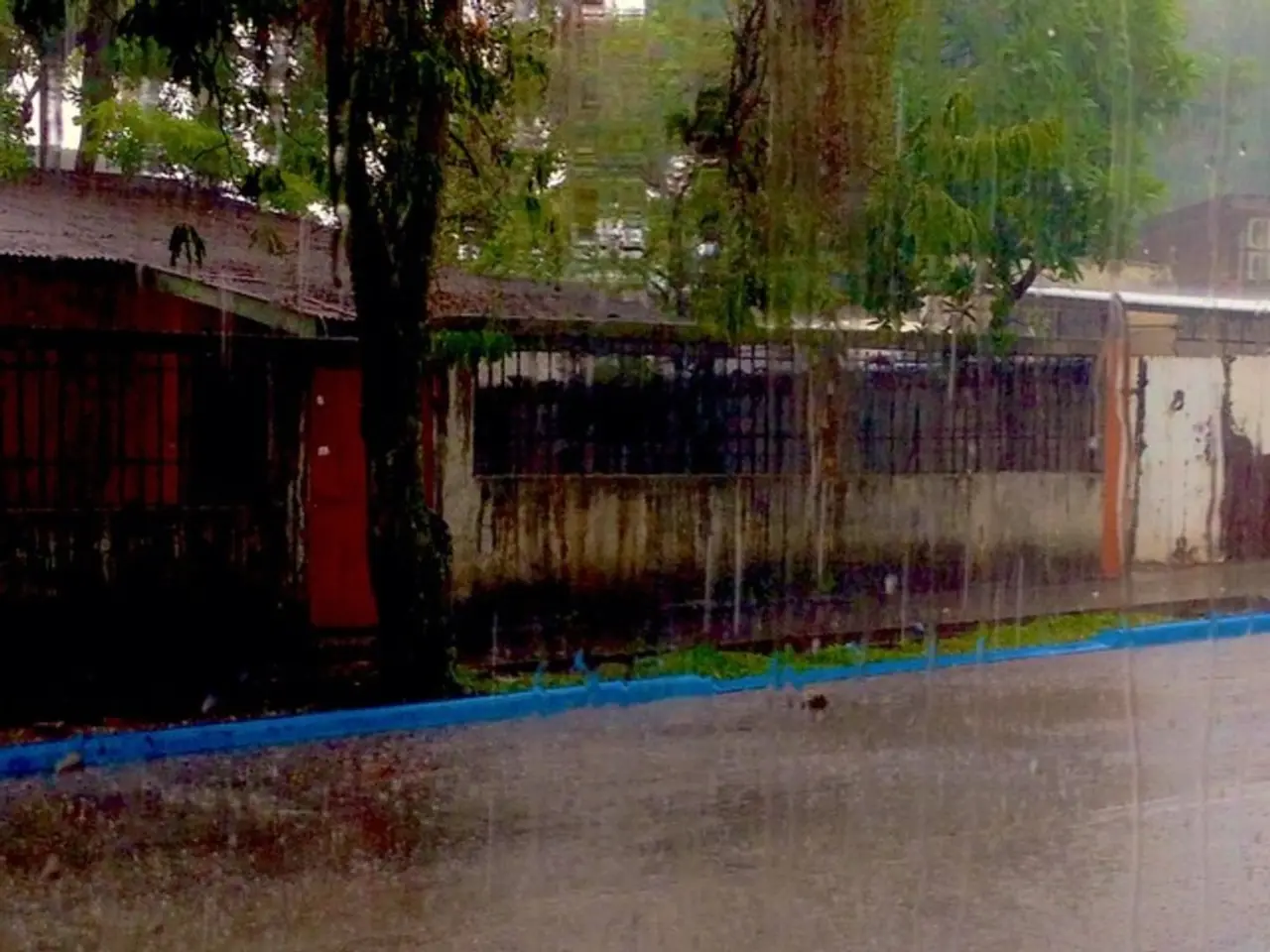Northern parts of Sweden braced for extreme heat, reaching temperatures comparable to southern European regions
A heatwave is set to affect non-coastal areas in the Västerbotten, Jämtland, and Västernorrland regions of Sweden, according to a yellow warning issued by the Swedish Meteorological and Hydrological Institute (SMHI) from Tuesday to Thursday.
The advisory encourages residents to take it easy during the heatwave, drink plenty of water to stay hydrated, and create a cool environment to stay comfortable. However, the advisory does not discuss the connection between the heatwave and climate change.
Historically, extreme summer heat in northern Sweden and areas near or above the Arctic Circle was rare. But recent trends show a significant warming pattern with multiple events of temperatures exceeding 30°C in these northern regions.
In July 2019, Markusvinsa in northern Sweden recorded a maximum temperature of 34.8°C—the highest ever above the Arctic Circle in Sweden. Similarly, a forecast for mid-July 2025 predicted temperatures potentially reaching 35°C well above 66°N latitude, including Västerbotten and nearby areas, along with tropical night conditions (nighttime lows staying unusually warm).
Sverker Hellström, a climatologist at SMHI, stated that the rising temperature over time is a sign of climate change. The current heatwave might be another example of this trend.
Maximum daily temperatures in some parts of Västernorrland region, eastern Jämtland, large parts of Västerbotten, and Norrbotten are forecast to reach 26-33C in the days ahead. These temperatures are higher than normal, but they have not yet broken the record of 34.9C in Piteå and 36.9C in Harads (between Jokkmokk and Boden) in the summer of 1945.
The advisory from SMHI reminds residents to be aware of warning signs of overheating or dehydration and to find ways to cool down during the heatwave. The frequency of heatwaves lasting 2+ weeks has increased in Sweden since 1961, with six three-week or longer periods recorded since 1961, the most recent before 2025 occurring in 2021.
These developments mark a clear shift toward more extreme and sustained summer heatwaves in northern Sweden, consistent with broader patterns of Arctic warming and climate change impacts in Scandinavia.
| Aspect | Historical Trend | Recent Trend (2020s) | |-------------------------|-----------------------------------------------|-----------------------------------------------------------| | Heatwave frequency | Rare, with few prolonged heatwaves since 1961 | Increasing frequency of heatwaves lasting 2+ weeks[4] | | Maximum temperatures | Below 30°C in Arctic regions historically | Record highs above 30°C, up to 35°C in some Arctic areas[1]| | Geographical extent | Mostly southern Sweden | Heatwaves now reach Arctic Circle and northern Sweden[1][3]| | Duration | Few events of 2+ weeks | 15+ days above 30°C observed in Finland and Sweden[3] | | Nighttime lows | Typically cool nights | Tropical nights recorded with minimal cooling[1] |
[1] [https://www.reuters.com/article/us-sweden-weather-idUSKBN28Q0G3] [2] [https://www.thelocal.se/20190723/sweden-has-its-hottest-ever-day-above-the-arctic-circle] [3] [https://www.theguardian.com/environment/2020/jul/10/sweden-records-hottest-temperature-ever-above-arctic-circle] [4] [https://www.smhi.se/en/publications/climate-change-and-climate-trends/climate-trends]
- The rising temperatures and increasing frequency of heatwaves in northern Sweden indicate a significant warming pattern that could be linked to climate change in environmental science.
- The historical trend of heatwaves in Sweden was rare, but recent developments show a shift toward more extreme and sustained summer heatwaves, particularly in northern regions such as Västerbotten, Jämtland, and Västernorrland, which may be a sign of climate change and Arctic warming.








